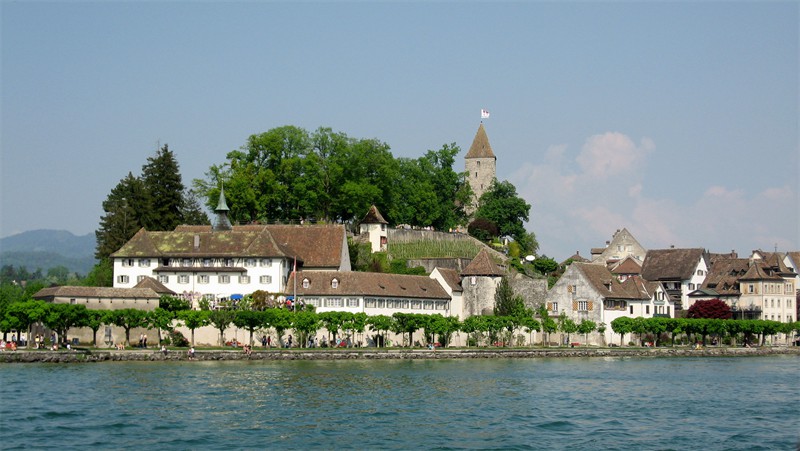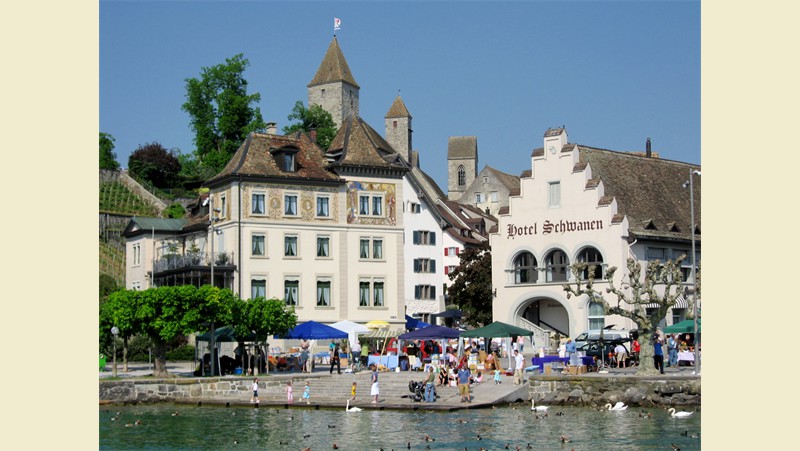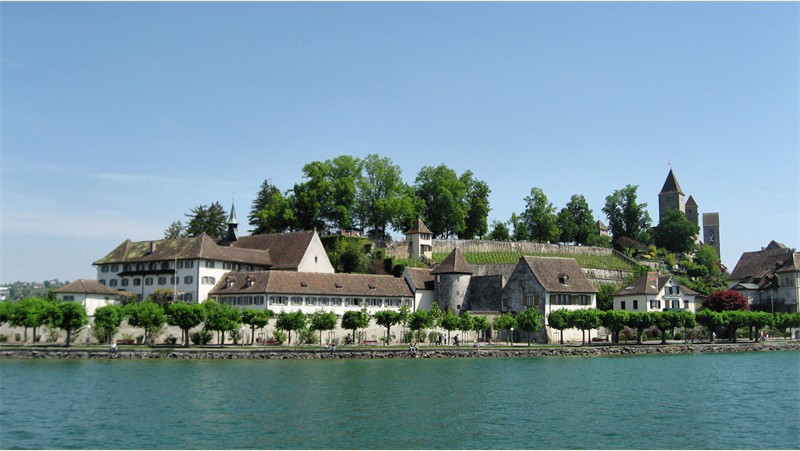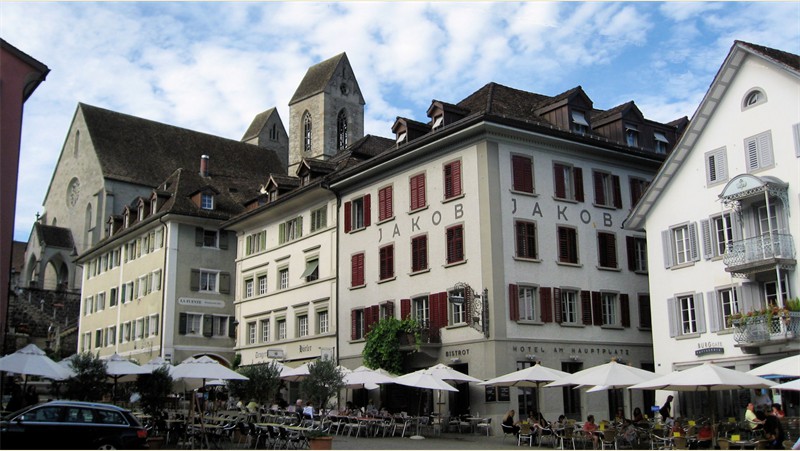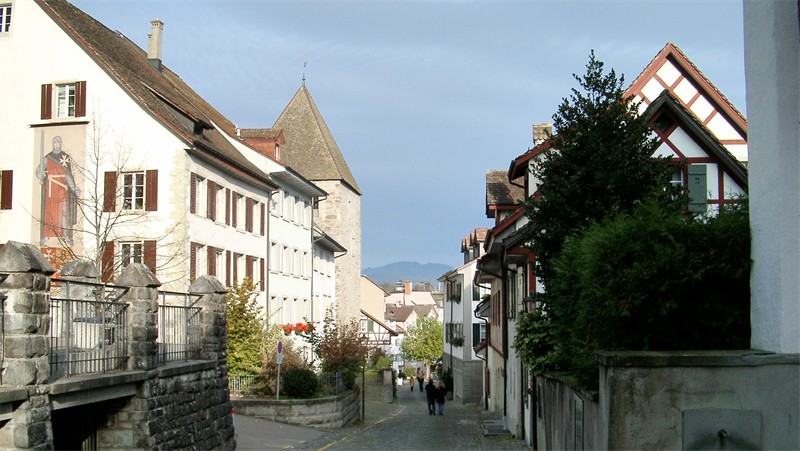
In the Middle Ages, the Rapperswil family and later the Habsburgs ruled this area. The latter had a first wooden bridge built over the lake.
(See: Short excerpt on the history of Rapperswil.)
The footbridge as a pilgrimage route is today depicted on a fresco on the facade of the corner house Mühlegasse / Fischmarktstrasse. The work was created by Josef Vollenweider in 1995 and measures approx. 2.5 by 5 meters. It depicts the pilgrim path from Rapperswil to Einsiedeln.
In the foreground next to the pilgrim with the pilgrim's hat, shell and the pilgrim's staff we see the baroque bell tower of the Heiliggeistspital. Today the former hospital is an old people's home, in the Middle Ages it served as a pilgrims' hostel. In the center of the picture we see the city walls with the dominating city gate. The pilgrim's path leads through the old city gate out onto the wooden footbridge, past the Heilighüsli to the other side of Lake Zurich and over the St. Meinrad (Etzel) to Einsiedeln. Above, the black Madonna of Einsiedeln can be seen in the red halo.
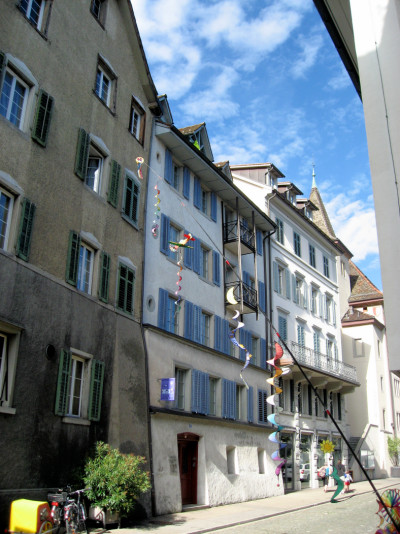
Since 10 May 2009 Rapperswil has a pilgrims' hostel with room for 12 people. It is located in the middle of the old town at Seestrasse 5.
and reservations can be made by telephone +41 (0)79 886 73 37 or via Internet www.pilgerherberge.ch.

Extract from the history of Rapperswil
The town and castle of Rapperswil were first documented in 1229. The castle belonged to the noble family of Rapperswil. After their extinction, the town and castle first came into the possession of the Habsburg-Laufenburg family, later on to their relatives Habsburg-Austria. It was also the Austrians who had the wooden bridge to Hurden built in 1358.
Rapperswil gained imperial freedom in 1415.
On 10 January 1464, Rapperswil entered into an umbrella alliance with the federal towns of Uri, Schwyz, Unterwalden and Glarus. In 1798, the French Revolution brought about the collapse of the old order in the Confederation. But already in 1803 the canton of St. Gallen was created, to which Rapperswil and Jona were assigned as the westernmost municipalities.
Around 1830, gates and walls fell victim to through traffic. In 1878 the first train also crossed the new stone lake dam, which replaced the old wooden bridge.

